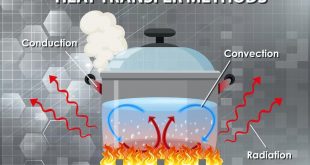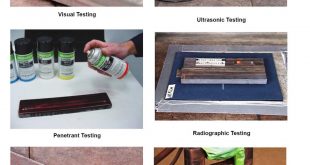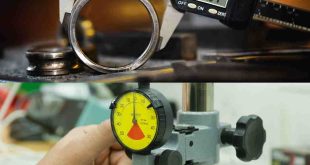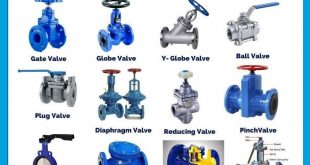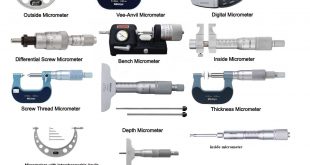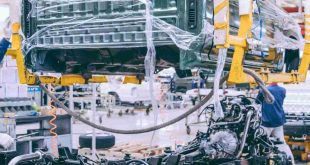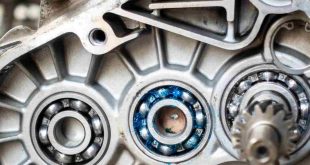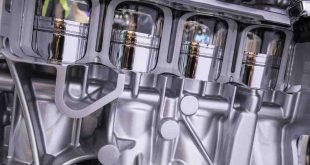Heat transfer is the movement of thermal energy from one object or system to another. This can occur in a variety of ways, including conduction, convection, and radiation. Each method of heat transfer plays a significant role in the everyday world, from cooking food on a stove to heating buildings …
Read More »Mechanical Articles
NDT Nondestructive Testing Methods
Nondestructive Testing (NDT) is a group of inspection techniques used to evaluate the properties of a material, component, or system without causing damage to the object being tested. Here are some common NDT methods: Ultrasonic Testing (UT) Radiographic Testing (RT) Magnetic Particle Testing (MPT) Liquid Penetrant Testing (LPT) Eddy Current …
Read More »Planning and Control of Maintenance Systems
Planning and Control of Maintenance Systems Effective maintenance management is vital for ensuring the smooth and efficient operation of industrial systems, machinery, and equipment. The planning and control of maintenance systems involve organizing, scheduling, and monitoring maintenance tasks to maximize equipment reliability, minimize downtime, and reduce costs. An effective maintenance …
Read More »How To Use Automotive Diagnostic Scanners
How to Use Automotive Diagnostic Scanners Automotive diagnostic scanners are invaluable tools for understanding and resolving vehicle issues. They’ve evolved significantly since the advent of On-Board Diagnostics (OBD), which emerged in the late 1980s to monitor emissions and engine performance. The introduction of OBD-II in 1996 standardized diagnostic systems across …
Read More »Engineering Metrology and Measurements
Engineering Metrology and Measurements Engineering metrology and measurements play a crucial role in ensuring the accuracy, reliability, and functionality of manufactured components. By employing precise measurement tools and techniques, engineers can verify that parts meet specified dimensions and tolerances, ensuring smooth assembly and optimal performance. Below is a detailed exploration …
Read More »Types of Valves with images
A valve is a mechanical device that controls the flow of fluid and pressure within a system or pipe. A valve controls the system or processes fluid flow and pressure by stopping, starting, and Regulating it. Types of valves and their Classification Although all valves have the same basic components …
Read More »Types of Micrometers and their uses
Some precision measuring tools are more accurate than others, but all can be read at least to the nearest 0.001 inches or 0.02 millimeters. There are four broad categories of precision measuring tools: • outside measuring tools, for measuring the diameter of a shaft or the thickness of a block; …
Read More »Basic Concepts of Automobile Engineering
Automobile Engineering: Basic Fundamentals to Advanced Concepts Automobile engineering is a specialized branch of mechanical engineering that focuses on the design, development, manufacturing, and maintenance of vehicles, including cars, trucks, motorcycles, and other modes of transport. It combines principles of mechanical, electrical, electronic, software, and safety engineering to create modern …
Read More »Bearings Basic Concepts and Design Applications
Bearings: Basic Concepts and Design Applications Bearings are essential mechanical components widely used in various industries to reduce friction and facilitate smooth motion between moving parts. By supporting rotating or moving shafts, bearings enable machines to operate efficiently and with minimal wear. Bearings come in numerous types, each designed for …
Read More »Root Cause Failure Analysis
Root Cause Failure Analysis: Uncovering Systemic Issues in Industrial Operations Root Cause Failure Analysis (RCFA) is a systematic approach to identifying and addressing the underlying causes of equipment, process, or system failures. Rather than focusing on surface-level symptoms, RCFA digs deeper to uncover the fundamental issues that lead to failures, …
Read More »An Introduction to Modern Vehicle Design
An Introduction to Modern Vehicle Design Modern vehicle design is a multidisciplinary field that integrates engineering, aesthetics, ergonomics, and sustainability to create vehicles that meet consumer demands and regulatory requirements. It encompasses every aspect of a vehicle’s creation, from conceptual design to production, focusing on functionality, safety, efficiency, and environmental …
Read More »Engineering Fundamentals of the Internal Combustion Engine
Engineering Fundamentals of the Internal Combustion Engine The internal combustion engine (ICE) is one of the most pivotal inventions in modern technology, powering everything from vehicles to industrial machines. This article explores the engineering fundamentals of internal combustion engines, examining the essential processes involved, from combustion to emissions control. Emissions …
Read More » Boilersinfo Boiler and Mechanical Power Digital Library
Boilersinfo Boiler and Mechanical Power Digital Library
